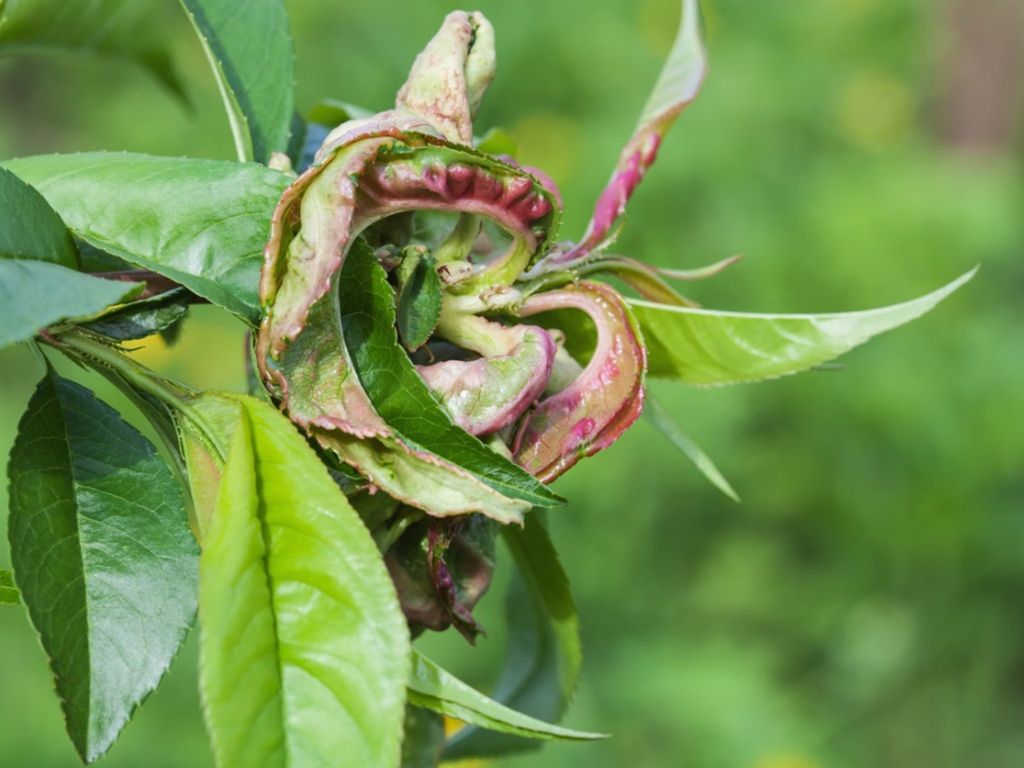Peach leaf curl is a frustrating fungal disease that can severely weaken and defoliate peach trees. It causes curled, distorted leaves that turn red or purplish and eventual leaf drop. Luckily, planting resistant peach varieties can help avoid this issue.
Overview of Peach Leaf Curl
Peach leaf curl is caused by the fungus Taphrina deformans. Spores infect emerging leaves in spring, causing distorted growth. Symptoms include:
-
Leaves pucker, curl, and become thickened.
-
Leaves turn red, purple, yellow or white.
-
Infected leaves fall off, leaving trees bare.
If uncontrolled the disease inhibits fruit production and vigor. Trees can be defoliated for consecutive years. Severe infections may kill young trees.
Leaf curl thrives in cool, wet spring weather Rain spreads spores Once leaves emerge, trees are highly vulnerable.
Impacts of Peach Leaf Curl
When peach leaf curl takes hold, it has several damaging effects:
-
Reduced photosynthesis due to lack of leaves
-
Loss of fruit crop yield
-
Increased susceptibility to other diseases
-
Lack of winter hardiness and winter kill
-
Eventual tree decline and death
Controlling the disease requires diligent fungicide applications at leaf emergence. But resistant varieties provide an easier, chemical-free solution.
Choosing Resistant Peach Varieties
The best defense against peach leaf curl is planting resistant or tolerant varieties. Here are top options:
Frost
-
White-fleshed freestone peach
-
Moderately resistant
-
Late harvest
-
Sweet, mild flavor
Q-1-8
-
White-fleshed semi-freestone
-
Highly tolerant
-
Ripens late July
-
Large, firm fruit
Muir
-
Yellow-fleshed freestone
-
Good leaf curl resistance
-
Ripens late July/early August
-
Sweet, juicy flesh
Indian Free
-
Yellow-fleshed freestone
-
Reported resistance
-
Ripens late July
-
Rich flavor, semi-firm flesh
Clayton
-
White-fleshed freestone
-
Some tolerance
-
Early August harvest
-
Mild, sweet flavor
Growing and Care
Resistant peach trees require the same care as other varieties:
-
Plant in well-draining soil in full sun
-
Space trees at least 8-10 feet apart
-
Fertilize in spring and summer
-
Prune annually for shape and growth
-
Thin fruit after blossoms drop
-
Protect from deer and rodents
-
Apply organic fungicide spray before leaf emergence the first 2-3 seasons
Expanding Options for Resistant Varieties
While the above varieties offer good resistance, researchers are working to expand options:
-
Breeding programs focus on leaf curl immunity and fruit quality.
-
DNA analysis identifies genetic sources of resistance for crossover breeding.
-
Markers can screen seedlings for resistance genes.
-
Identifying sources of resistance in various peach types broadens options.
-
Resistant rootstocks show promise for expanded disease control.
In coming years, expanded selections of tasty, leaf curl resistant peach trees will become available to growers. This will reduce reliance on fungicides and help avoid frustrations with this prevalent disease.
Enjoy Peaches Without the Leaf Curl Hassle
You can succeed with peaches, even where leaf curl runs rampant. Select resistant varieties matched to your climate and growing conditions. With the right cultivars and care, you can harvest bushels of delicious, homegrown peaches.
Oregon Curlfree Peach Trees: Resistant to Peach Leaf Curl, Productive and Delicious – Variety Review
FAQ
How do you stop leaf curl on peach trees?
Is Neem oil effective against peach leaf curl?
Can you eat the fruit with leaf curl on a peach tree?
What is the hardiest peach tree?
What is the best leaf curl resistant peach?
The first Leaf Curl Resistant peach to be grown in Western Washington was Frost. Since then, several other promising varieties have been identified as leaf curl resistant, including Avalon Pride, Salish Summer, and Betty. These selections are suitable for home production and are part of the trial at Cloud Mountain Farm Center.
What is peach leaf curl?
Peach leaf curl is a fungal disease that affects usually peach and nectarine trees. If the disease isn’t treated during the dormant season, over time the leaves will fall off and the fruit production will be much less. However don’t worry because this disease can be easily treated.
Do Indian free Peaches have leaf curl?
Unlike all of the peaches listed above, ‘Indian Free’ must have a different variety of peach growing nearby for cross pollination in order to produce fruit. Be aware that even if a peach is resistant to peach leaf curl, it’s still susceptible to the disease for the first few years after planting.
How does peach leaf curl affect a plum tree?
Where the disease is severe, tree vigor and fruit quality and yield are reduced. Peach leaf curl often becomes more prevalent after relatively mild winters, which are more favorable for the survival of the organism that causes the disease. A related disease, plum pockets, affects plums.
- A Complete Guide to Caring for Yuki Cherry Blossom Shrub - January 23, 2025
- Identifying Red Hot Poker Seeds: What to Look For When Harvesting Torch Lily Pods - January 23, 2025
- A Complete Guide to Harvesting Evening Primrose Seeds - January 23, 2025

